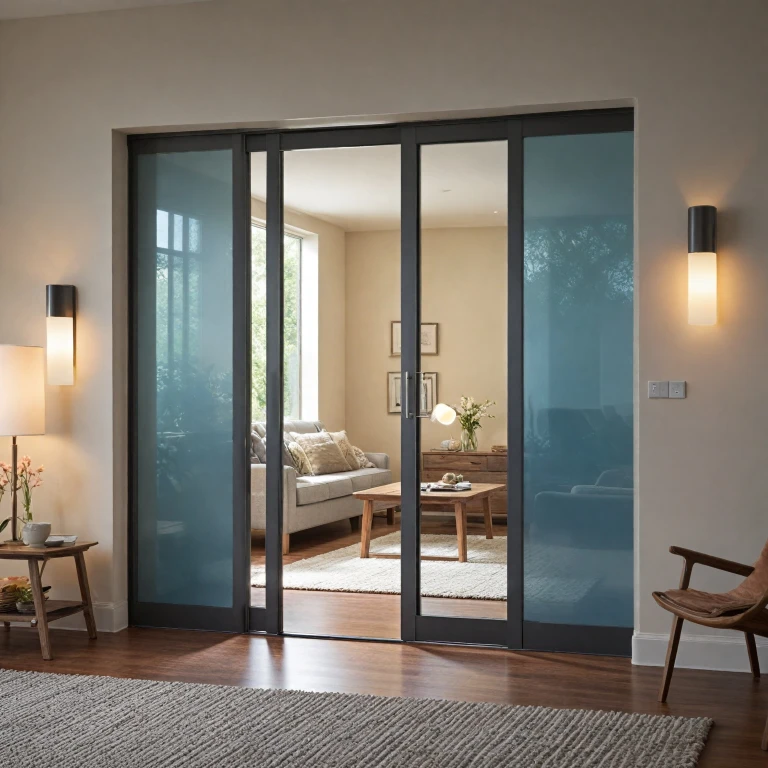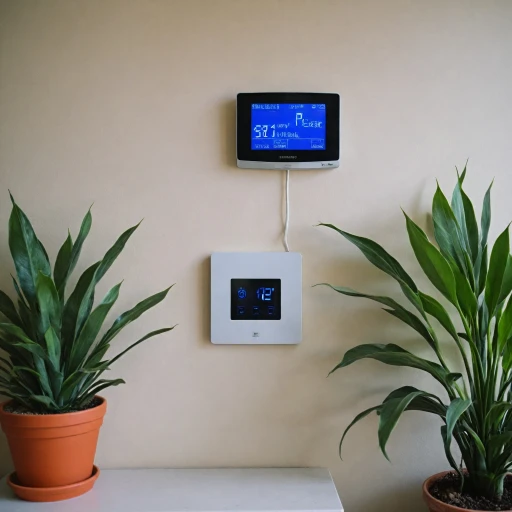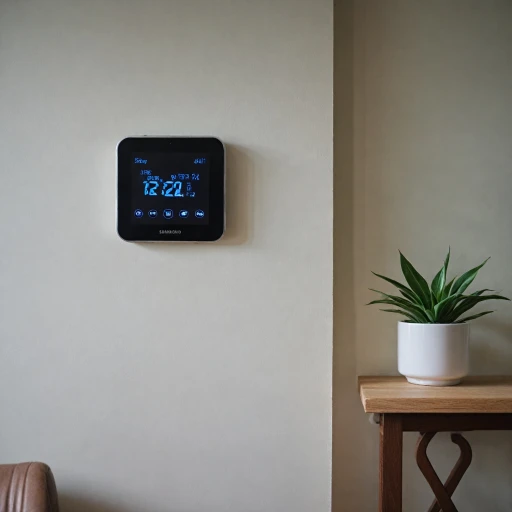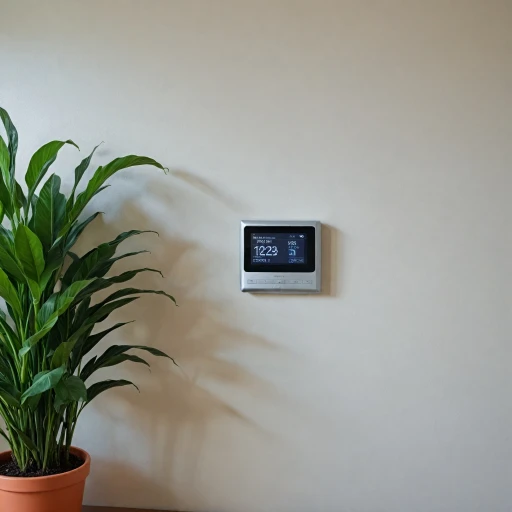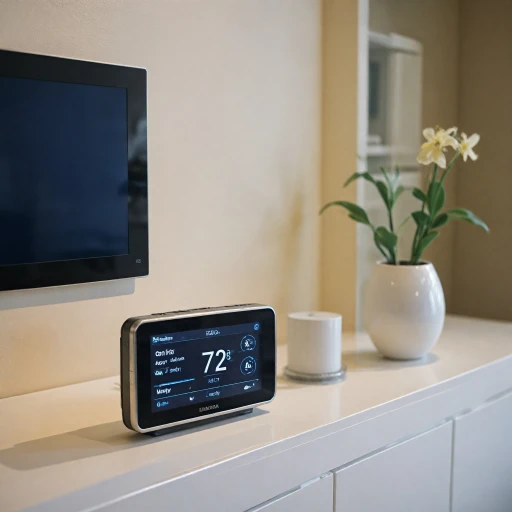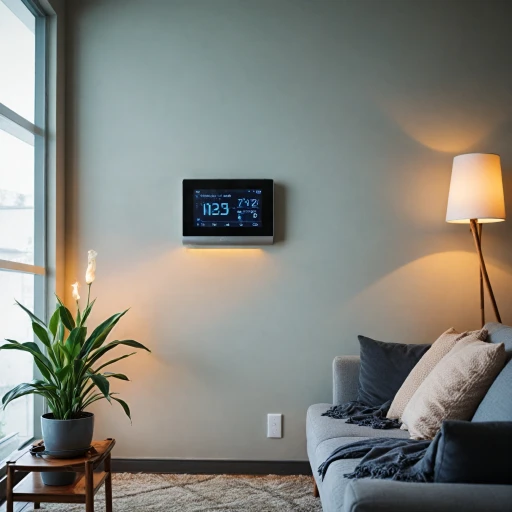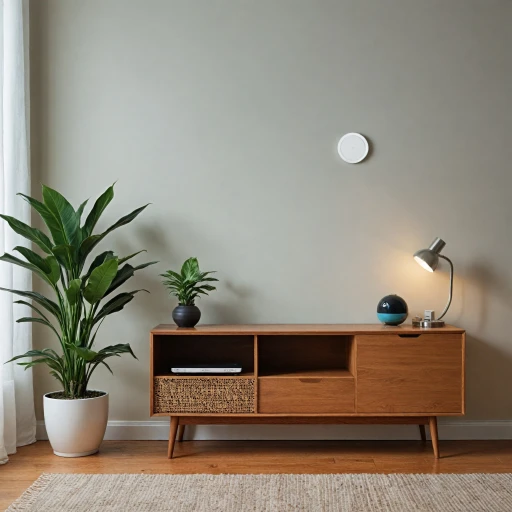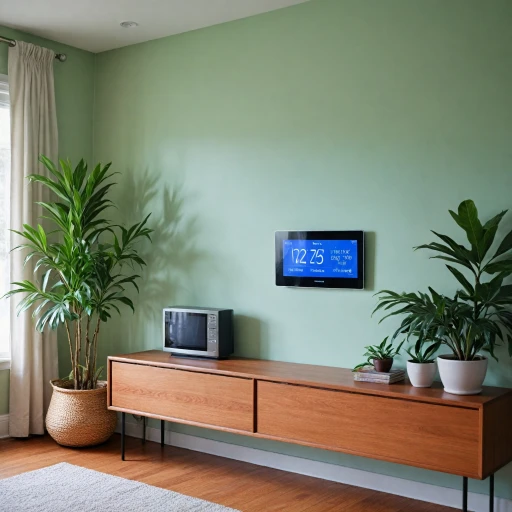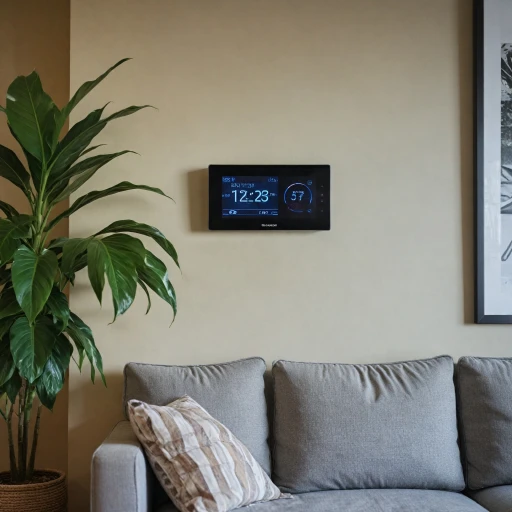
Understanding Smart Thermostats: A Modern Home Essential
The Smart Thermostat: Revolutionizing Home Comfort
Smart thermostats have become an essential part of the modern home, intertwining convenience and efficiency. They represent a leap from traditional thermostats by incorporating intelligent technology that caters to both your comfort and your energy needs.
With the rise of the smart home, these devices go beyond just adjusting your home's temperature. Using wifi connectivity, they communicate with other smart devices in your ecosystem, such as a smart door lock or even a security camera. This integration can enhance security by ensuring that your home's systems work together seamlessly.
App control is a key feature, allowing users to monitor and adjust their thermostat settings remotely. Whether you're at work or on vacation, you have the power to adjust your home's comfort level with just a few taps on your smartphone. Additionally, innovations like face recognition and fingerprint smart systems might one day help thermostats learn your preferences, adapting the environment to your needs without any manual input.
The convenience does not stop at connectivity. Many smart thermostats come equipped with sleek designs, some even offering a slim profile to blend seamlessly into your home decor. Others feature easy install options, making it feasible for almost anyone to upgrade their home heating and cooling system without professional help.
But it's not just about convenience and aesthetics. Smart thermostats are designed to learn from your behaviors and adjust settings to optimize energy efficiency. This can result in significant cost savings over time. Automatic adjustments based on occupancy patterns help to conserve energy, marrying technological advancement with environmental responsibility.
As we explore further in this series, you'll find that understanding these nuances is crucial to maximizing the benefits of this modern gadget. From comparing popular brands to diving into installation tips, the world of smart thermostats is vast and promising.
Key Features to Look for in a Smart Thermostat
Essential Features for an Intelligent Climate Control
When you embark on the journey of selecting a smart thermostat, it becomes essential to understand the features that make these devices a modern necessity, just as with smart locks on sliding doors. These thermostats not only ensure comfort but also enhance energy efficiency, functioning much like a smart lock enhances door security.
- WiFi Connectivity: A must-have feature that allows you to control your thermostat remotely via an app. Whether it's adjusting the temperature while you're away on vacation or just before you come home, WiFi connectivity gives you the flexibility and convenience akin to keyless entry on your door.
- App Control: Much like managing smart locks for your doors, having a user-friendly app to control your thermostat simplifies operations. You can schedule temperature changes and receive alerts, adding a layer of comfort to your household.
- Learning Capabilities: Some smart thermostats can learn your habits over time and adjust the temperature accordingly. This feature can lead to cost savings and increased energy efficiency, similar to how auto-lock features in smart locks improve security.
- Voice Control Compatibility: Integration with smart home systems and voice assistants, enhances convenience. It's like having a fingerprint smart lock; you can adjust the temperature without lifting a finger, offering seamless interaction.
- Energy Tracking: Keeping tabs on energy usage helps you understand your consumption patterns and changes that can lead to savings. With detailed reviews available, akin to those for sliding door locks, you can make informed decisions.
- Flexible Installation: Easy install options ensure that setting up your thermostat isn't burdensome, similar to slim and sleek smart door locks for glass doors. Whether you have a traditional or swing door, simplicity in installation enhances user experience.
Incorporating these features can elevate your home’s climate control system while promoting efficient energy use and offering the convenience of smart technology. Much like smart locks for sliding glass doors, the right thermostat can be both practical and stylish.
Energy Efficiency and Cost Savings with Smart Thermostats
Redefining Energy Efficiency with Smart Controls
Smart thermostats are not just about modern technology—they are practical solutions for improving energy efficiency and reducing utility bills. By employing advanced algorithms and smart features, these devices learn your household's habits and adjust the temperature accordingly, ensuring that energy is used only when necessary.
How Smart Features Contribute to Savings
- Remote Control: Via apps, you can adjust your home's temperature from anywhere, preventing unnecessary heating or cooling when no one is home.
- Auto-Lock Functionality: Combine temperature control with security features like camera and auto-lock in smart door locks which ensure efficient use while maintaining home security.
- Learning Capabilities: Over time, smart thermostats learn when you wake up, leave for work, and return home, optimizing their settings to your schedule and preferences.
Integration and Compatibility
Many smart thermostats integrate seamlessly with other smart home devices—such as smart locks for sliding doors, enhancing the overall efficiency and security of your living space. For instance, integrating with smart door locks helps automate home settings based on entry or exit, aligning heating or cooling with usage patterns.
Measuring Effectiveness through Reviews and User Feedback
Before making a purchase, checking product reviews provides insight into real-world energy savings achieved by other users. This includes assessing app controls, ease of installation, and overall satisfaction with the product's performance regarding energy efficiency.
These energy-efficient solutions not only help maintain ideal home temperatures but contribute to a more sustainable lifestyle—making smart thermostats a worthwhile investment for any modern home.
Comparing Popular Smart Thermostat Brands
Comparing Leading Smart Thermostat Brands
When you're on the hunt for a smart thermostat, the sheer variety of options can be overwhelming. To make an informed decision, it’s vital to compare popular brands that lead the smart home technology landscape. Here's a closer look at some of the top competitors in the market.- Nest: Known for its sleek design and easy-to-use interface, Nest thermostats set the standard for smart home innovation. They integrate with various home systems, including smart locks for added security. Their energy-saving features and compatibility with most HVAC systems make them a go-to option for many homeowners.
- Ecobee: Ecobee stands out with its remote sensor capabilities, which help manage hot and cold spots by adjusting based on room occupancy. Its built-in Alexa voice control function allows hands-free operation. Reviews praise the Ecobee for its user-friendly app and excellent customer service.
- Honeywell Home: With models ranging from basic to advanced, Honeywell Home thermostats offer a wide array of options with robust reliability. Their compatibility with most smart door locks and sliding door solutions provides seamless integration for those focusing on security enhancements.
- Sensi: A top choice for those seeking budget-friendly solutions without sacrificing quality. Sensi thermostats offer essential smart features with easy installation and reliable app control. Consumers appreciate the practical functionality, though it may lack some advanced features like face recognition.
Installation and Maintenance Tips for Smart Thermostats
Smart Thermostat Installation: A Seamless Home Upgrade
Installing a smart thermostat can be a straightforward process, especially for those who have some basic home improvement skills. However, even if you’re not a DIY enthusiast, many companies offer professional installation services to ensure that your device is set up correctly. Proper installation is crucial to fully reap the benefits of energy efficiency and integrating with other smart devices, including smart locks or security cameras.
Here's a step-by-step guide to help you get started:
- Read Product Manuals: Before beginning with the installation, it’s important to thoroughly read the product manual. Many trusted brands provide detailed instructions and app guides to make the setup as seamless as possible. This step is especially essential if your smart thermostat includes advanced features like remote control or app control via wifi.
- Basic Installation Steps: Generally, installing a smart thermostat involves removing the old thermostat, labeling the existing wires, and connecting them to the new device. It's essential to ensure that the power is turned off at the circuit breaker before starting this procedure.
- Connect to the Smart Network: Once physically installed, the next step is connecting the thermostat to your home wifi network. Most models allow app integration for easy control and monitoring, offering insights similar to the reviews you’d find for smart door security products.
- Testing and Calibration: After installation, test the system to ensure it's functioning correctly. Calibration might involve setting up your preferred heating and cooling schedules and checking the integration with other smart home security features, like door and glass sensors.
- Regular Maintenance: Routine maintenance can help prolong the life of your smart thermostat. Cleaning the device and ensuring firmware updates are applied will keep your system running smoothly. Some thermostats offer proactive tips through their apps, alerting you when maintenance is needed, much like the notifications from app-controlled sliding door locks.
Relying on expert help for your installation can offer peace of mind, especially when dealing with complex integrations with other smart devices such as door locks with face recognition or fingerprint functionality. For those prioritizing home security, combining a smart thermostat with multi-functional smart locks for both sliding and swing doors enhances overall safety while maintaining energy efficiency.
Future Trends in Smart Thermostat Technology
Emerging Innovations and Trends in Smart Thermostats
The future of smart thermostats is brimming with cutting-edge advancements and trends that promise to revolutionize how we interact with home climate control systems. These developments are poised to offer homeowners even more convenience, energy efficiency, and connectivity.- Integration with Smart Home Ecosystems: As smart home ecosystems expand, smart thermostats are increasingly compatible with other devices, like smart locks and security systems. This integration allows users to control their home environment more seamlessly using a single app, enhancing the synergy within connected homes.
- Enhanced Learning Capacities: Modern smart thermostats are becoming smarter with improved machine learning algorithms. These systems learn from users' schedules, habits, and preferences to optimize energy usage and comfort levels more intuitively.
- Voice and Gesture Controls: Thanks to advancements in AI and natural language processing, voice control has become a standard feature in many smart thermostats. Future models are expected to incorporate gesture controls, offering users hands-free interaction, much like some smart door locks that now feature facial recognition and fingerprint access.
- Energy Usage Insights and Automation: With improved data analytics, future smart thermostats will provide even more detailed energy usage reports. This can empower homeowners to make informed decisions to lower their energy bills, leveraging technologies like wifi connectivity for up-to-date app control.
- Compatibility with Renewable Energy Sources: As the world shifts towards renewable energy, smart thermostats compatible with systems like solar panels will become more prominent. This ensures efficient usage of sustainable energy sources, promising greater long-term savings and reduced environmental impact.
- Advanced Security Features: Building on trends from smart locks, which feature innovations like remote control and camera integrations, future smart thermostats may incorporate more advanced security features, providing peace of mind when integrating with broader home security systems.
